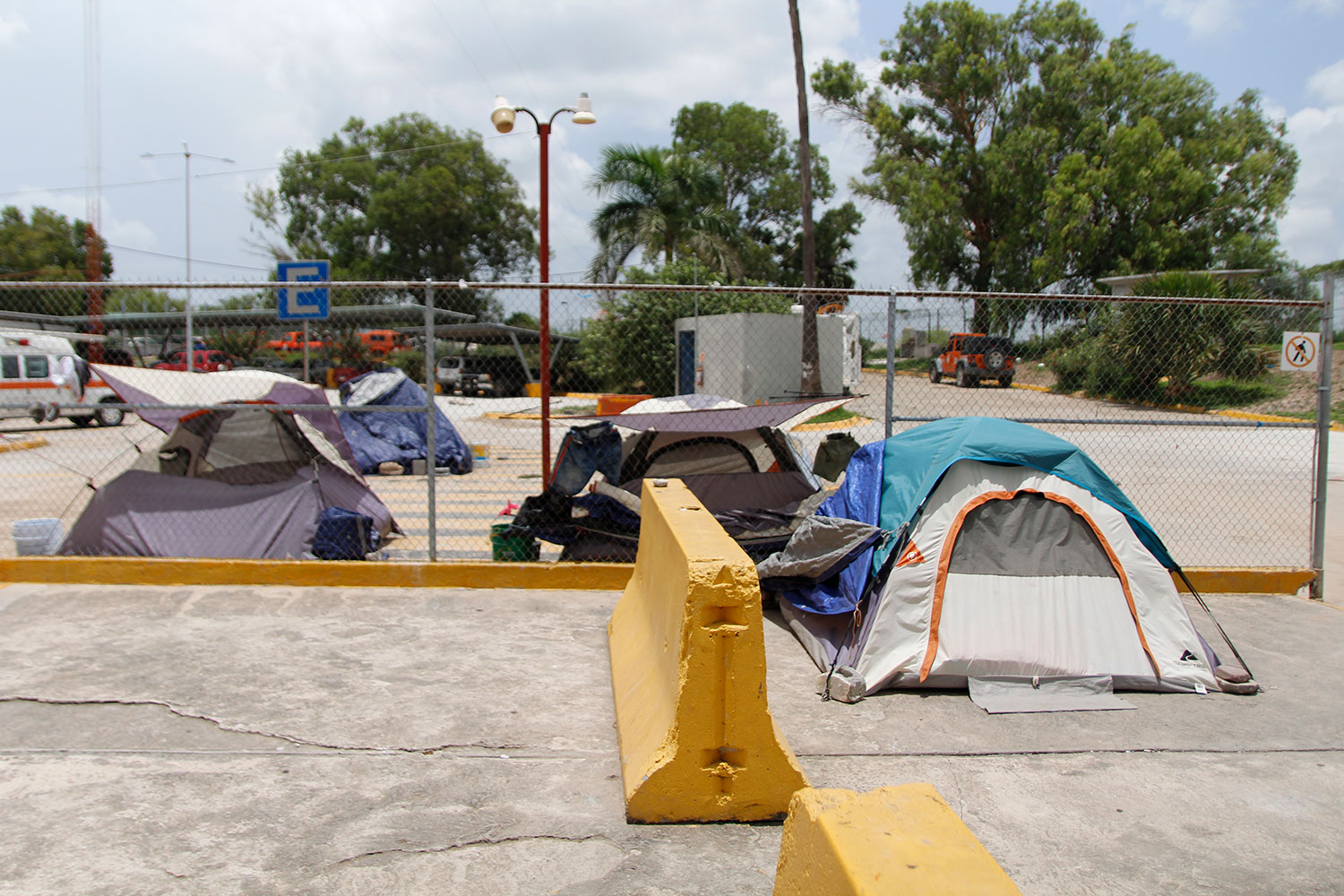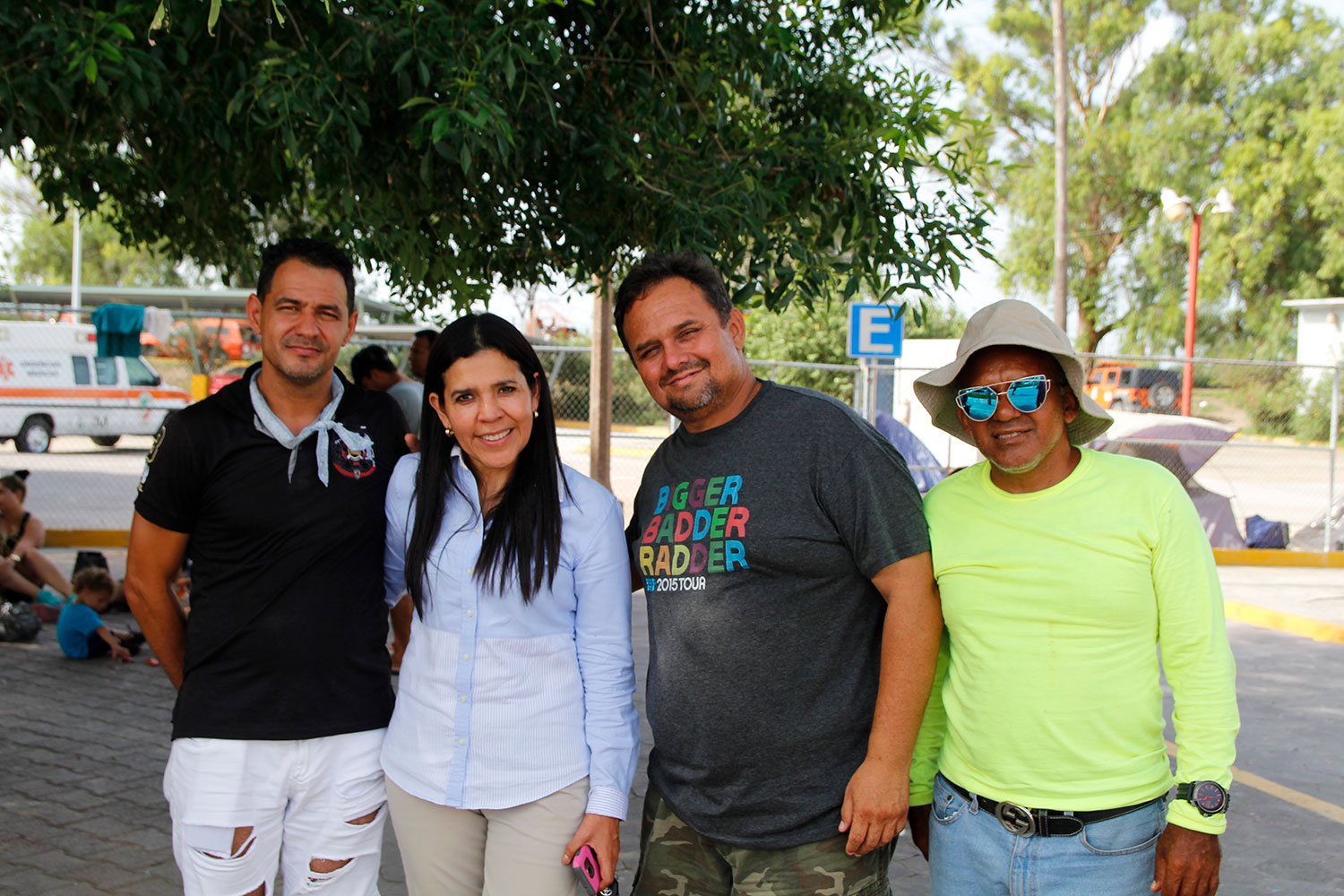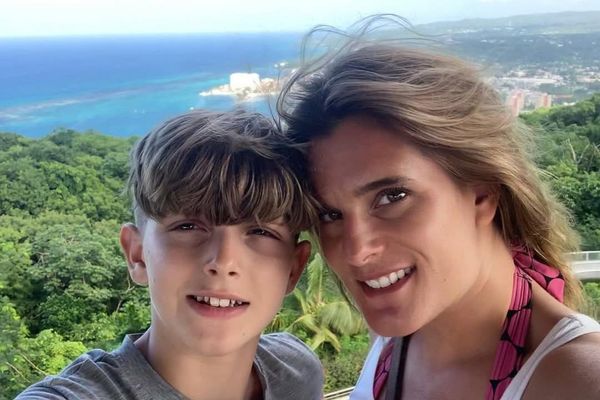In the Mexican border city of Matamoros, just feet from the Gateway International Bridge to Brownsville, a few dozen asylum-seekers cluster beneath the shade of a lone tree shielding them from the blistering Tamaulipan sun. Children sleep on blankets laid on the concrete, chase one another about and play soccer. Cubans, Hondurans, Nicaraguans and Cameroonians, the refugees have been stranded here for as long as three months — the result of a year-old Trump policy known as “metering,” whereby Customs and Border Protection (CBP) processes only a tiny number of asylum-seekers per day at ports of entry.
Just days before, a Salvadoran father, mother and 23-month-old child had arrived at the same site, hoping to start a new life in the North Texas city of Irving. Facing the same interminable wait, the family decided to brave the Rio Grande illegally. The father, Óscar Alberto Martínez Ramírez, and child, Valeria, were found drowned on the riverbank the following morning. An image of the pair went viral, and they were mentioned by name during last week’s Democratic presidential debates.
“The people who cross like that, they do it because they’re desperate,” said Jennifer, an 18-year-old Cuban, when I visited Matamoros on Friday. (Like others in this story, she requested that her last name be withheld.) As we chatted, Jennifer cradled her 8-month-old son, Flavio. Soon, a group of Cubans — all hoping to apply for asylum and live in Florida — had joined the conversation to voice their frustration with their months-long waits. “We don’t understand the long delays,” said Jennifer’s husband, Alberto, adding that most of the families who get through are quickly released. “Once one is out, why not take another family?”

All of the dozen or so migrants I spoke with said that, at best, two or three people are allowed to cross the bridge and apply for asylum per day. Many days, that number is zero. Mexican officials maintain a list of asylum-seekers in the order they arrived, so that agents know who to call when CBP tells them to send folks. Today, the list reportedly contains more than 2,000 names. (The list was previously posted publicly near the bridge, but a few weeks ago, it was removed. Mexican officials at a nearby office refused to confirm the number of names.) A May report from the University of Texas and the University of California generally confirms those figures.
Since metering began last year, critics have said the policy baselessly punishes those who seek asylum in the most legal and orderly of ways: requesting protection from customs agents at designated ports of entry. CBP generally justifies the policy by saying it lacks processing capacity; the agency did not respond to a request for comment for this story.
In Matamoros, it’s not hard to see why someone would lose hope and brave the river. Some asylum-seekers spend their nights outside, sleeping in tents or on the ground. Others pool money to rent rooms in hotels or houses, cramming seven or eight people into one bedroom to make their pesos stretch. They rarely explore the city — preferring to hang out right by the port — because migrants are frequent cartel targets for kidnapping and extortion. There are no free restrooms near the bridge, so migrants often must relieve themselves along the banks of the Rio Grande. Mothers wash their children with buckets of river water.
“The reason [the Martínez family] crossed the river is because of all this process and delay,” said Kevin, a Cameroonian who fled persecution of English speakers in his home country. For a month now, Kevin has slept outside. Still, he says he will not risk the river himself — primarily because he doesn’t want to break the laws of the United States. “We have good intentions in this country; we don’t have bad intentions.”
Migrants have long risked their lives en route to America. According to the Border Patrol, 283 died last year; 492 died in 2005. Many have perished in the Sonoran desert of Arizona or the harsh scrubland of Brooks County. And it’s not new for asylum-seekers to cross the river — often with the help of a smuggler — before turning themselves in. Still, Trump has made it harder to properly seek asylum, putting pressure on migrants to cross in more dangerous ways. In that sense, each death bears his fingerprints.

In Brownsville, an insurgency of good samaritans has arisen to help the refugees. Groups including Team Brownsville, Angry Tías y Abuelas and the ACLU have come together to provide three meals a day. Glady Cañas, who works with the Matamoros-based Asociación Ayudándoles a Triunfar, coordinates with Mexican authorities, delivers donated clothing and simply visits the migrants. “Sometimes, just listening to them helps lift their burden for a time,” she said.
At about 6 p.m. the day I’m there, a local church group arrives with coolers full of tortas and tacos. Before serving, four women lead the crowd in a cacophonous prayer, each offering her own spontaneous benedictions. “Open the doors for them, Lord,” one intones.
Before I leave to cross the bridge back to Brownsville, I ask Cañas a final question. If Trump doesn’t change his policy of stonewalling asylum-seekers, will he cause more tragedies like the deaths of Martínez and his daughter? Cañas doesn’t get to answer. A pair of Cuban refugees to my left burst in with a loud and unequivocal “yes.”







